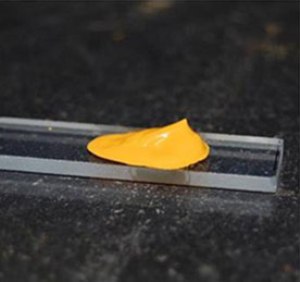A research team led by Prashant Kamat, who serves as an investigator at the Center for Nano Science and Technology (NDnano) of the University of Notre Dame as well as John A. Zahm Professor of Science in Chemistry and Biochemistry, has utilized quantum dots, which are semiconducting nanoparticles, to develop a low-cost solar paint for generating energy.
 Solar paint
Solar paint
Kamat explained that his team integrated quantum dots, which are power-generating nanoparticles, into a spreadable compound to create the one-coat solar paint, which can be coated over any conductive surface devoid of special equipment.
In the paper published in the ACS Nano journal, the research team described its search for the novel materials, which are titanium dioxide nanoparticles coated with either cadmium selenide or cadmium sulfide. The team formed a paste by dispensing these particles in a mixture of alcohol and water. When the paste was coated over a transparent conducting material and placed under light,it generated electricity.
Kamat commented that the light-to-electricity conversion efficiency of his paste was 1%, which is much lower than the normal 10% to 15% conversion efficiency of silicon-based commercial solar cells. If the conversion efficiency of the paint can be improved, it will play a crucial role in fulfilling the future energy demands, he said.
Kamat further stated that this paint can be produced in large volumes at low cost. The name of the novel paint is Sun-Believable. The research team intends to analyze the methods to enhance the new material’s stability.